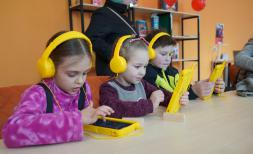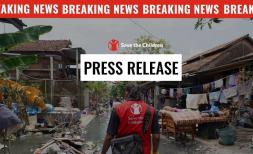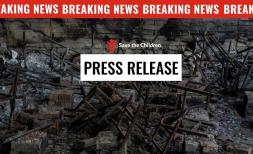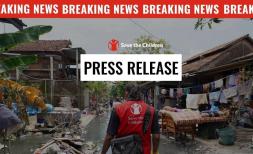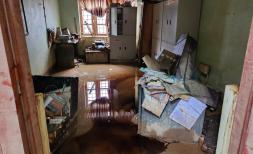Endless volcanic activity takes toll on children’s mental health, one month since Mayon Volcano started erupting
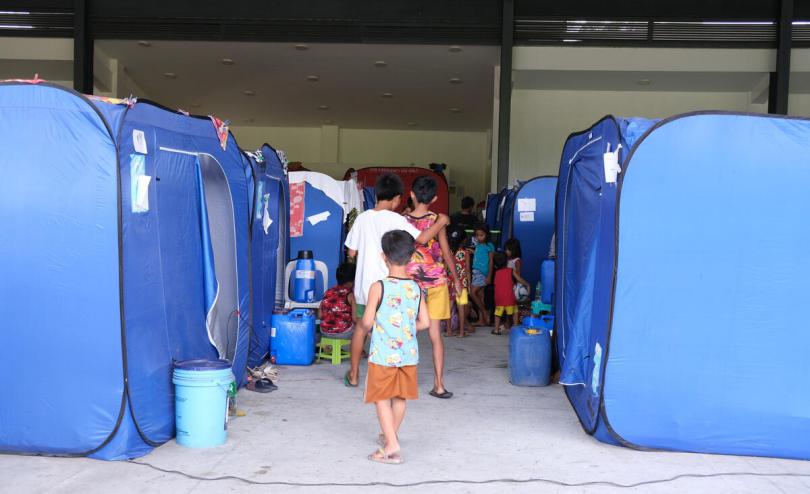
MANILA, 11 July 2023 – Children who were forced to flee their homes when Mayon Volcano first erupted in the Philippines a month ago are now living in cramped, squalid evacuation centres and are starting to show signs of physical and psychological distress, Save the Children said.
The Philippines government declared a state of calamity across 18 cities on 11 June when the volcano started to erupt. Continuous volcanic earthquakes, rockfalls and sulphur dioxide emissions over past weeks have caused breathing issues in children, with some children falling sick with coughs and colds, acute respiratory infections, fever and dizziness.
The 26 temporary evacuation shelters for displaced families - housing more than 18,000 children and adults – are primarily located in schools and have become increasingly congested and dirty. The lack of proper ventilation and hygiene facilities has raised concerns for the health of women and small children who are sheltering there.
Save the Children staff members have spoken with families in the evacuation shelters and are extremely concerned to learn that children are finding it hard to sleep due to increased anxiety and fear after witnessing the volcano spew ash and lava.
The uncertainty about the situation and the ongoing danger of a high-level hazardous eruption within days or weeks is particularly challenging for children, who have been displaced for a month and have no idea when they might return home or if things will get worse.
Save the Children is urgently calling on donors to release additional funds to meet the immediate healthcare and psychological needs of children and to avoid prolonged disruption of normal life that could have a significant long-term impact on their mental and emotional well-being.
Almost 40,000 residents in the Albay region around the volcano have been impacted due to Mayon's eruption. If volcanic activity escalates to a violent and life-threatening level, this number could more than double. Alert level 3 remains in place over the eruption, meaning a hazardous explosive eruption could occur within days, weeks or even months.
Meanwhile, the Department of Social Welfare and Development said in a statement that its central office will send 1,000 family tents to its Bicol Regional Office in preparation for possible raising of Mayon Volcano’s alert level.
Atty. Alberto Muyot, Chief Executive Officer of Save the Children Philippines said:
"Children in these centres are experiencing difficulty sleeping due to worries and fears. Their world has been upended; their sense of stability shattered. Some are also suffering from respiratory illnesses. Some of them require specific support, and balancing their immediate requirements with recognising their long-term needs is imperative. We must act decisively to ensure their emotional well-being remains intact during this challenging period.
"In the face of the ongoing volcano's eruption, we are working swiftly to establish temporary schools. These educational sanctuaries will nourish children’s minds and provide a semblance of normalcy, a lifeline to hope and stability. While we tend to their material needs, our responsibility is to foster an environment that nurtures their resilience, allowing them to weather the storm."
To combat this disruption, Save the Children in the Philippines is running mental health support programs in three of the evacuation centres, including art classes and other creative activities with the support of trained mental health counsellors and with local partner Tarabang para sa Bicol (TABI). These activities aim to provide children with a safe space to express their emotions and cope with the stress caused by displacement due to the volcanic eruption.
NOTES:
- Photos of children attending psychosocial activities in the evacuation centres are available: https://www.contenthubsavethechildren.org/Share/5d0wepf1a3g4st7c5go1ha21j7u5771e
- The Philippines is located in the so-called Pacific "Ring of Fire,” a region prone to earthquakes and volcanic eruptions. Mayon, located about 330km southeast of the capital Manila, has a unique cone shape and has erupted more than 50 times in the past 400 years. Five years ago, the volcano displaced tens of thousands of people after spewing millions of tonnes of ash, rocks and lava.
MEDIA ENQUIRIES:
Sacha Myers, Interim Regional Media Manager, Asia
Sacha.Myers@savethechildren.org.au / +61418383370
After hours media line: Media@savethechildren.org.uk / +44(0)7831 650409
